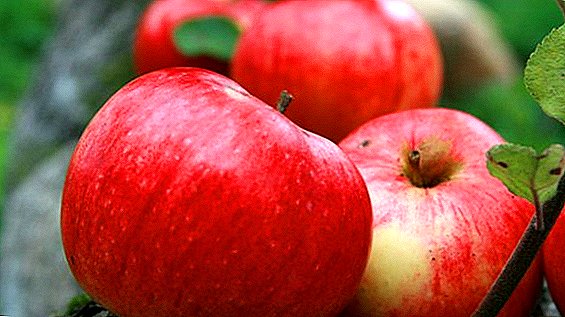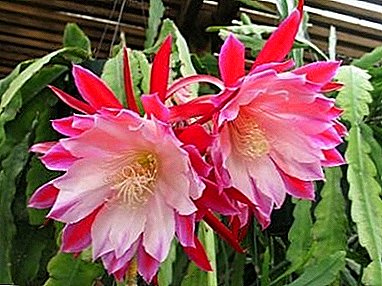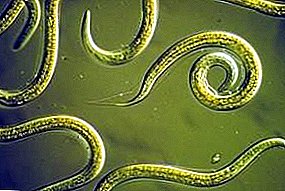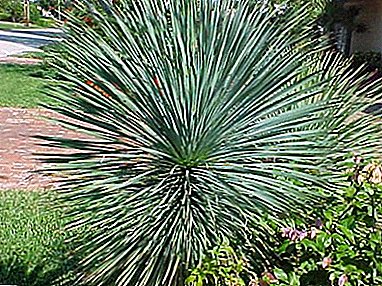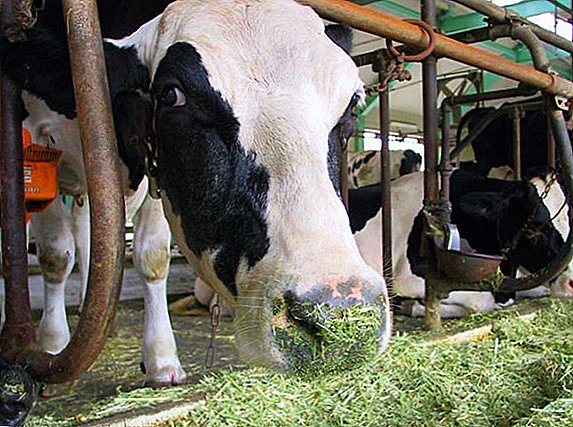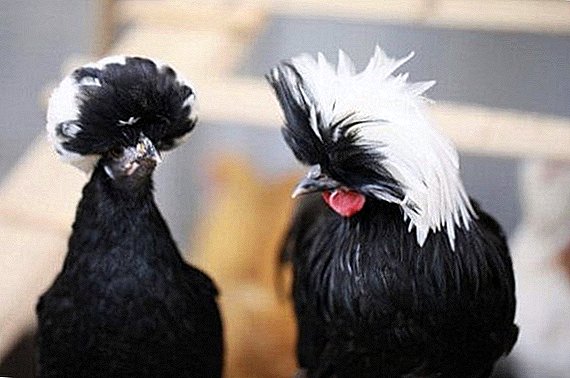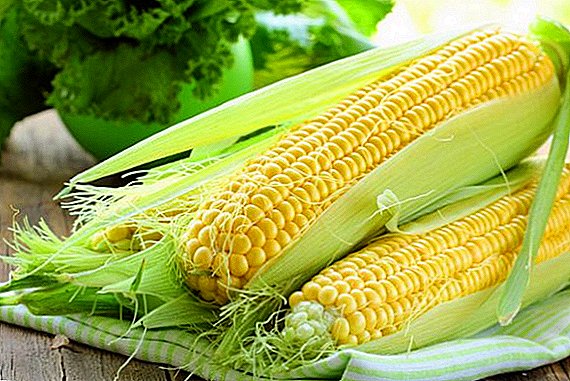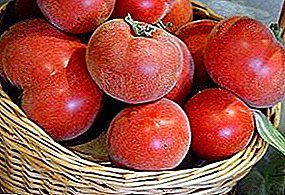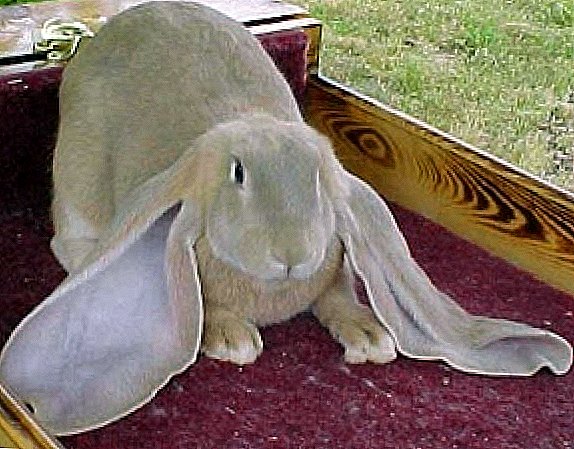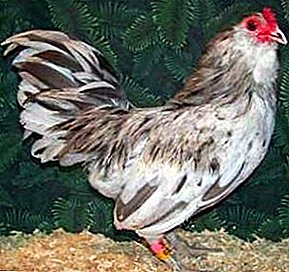
Ameraukana breed chickens are one of the few that carry blue eggs. The unusual color of eggs, the taste of meat and high productivity have earned the love of this breed among poultry farmers and consumers around the world.
The name Ameraukana (Ameraucana) comes from the mixing of the words American and the names of the breed of hens Araucan.
The breed was bred in the United States of America by crossing the already mentioned Araucana and local breeds of chickens in the 70s of the 20th century. The main impetus for this was the holding of the World Fair in Montreal in 1967, when unprecedented chickens carrying blue, greenish and turquoise eggs were brought to North America. Officially, the American Poultry Association adopted the standard breed Ameraukana only in 1984.
Many lovers call Ameraukana Easter chickens because of the varied colors of their eggs. The fact is that in the United States so called all the chickens that carry eggs of unusual color. This statement is outraged by specialists in the poultry industry, because the Ameraukan chickens breed is unique, has high standards and requirements for the external parameters of individuals, including shape, weight, color, earlobes, and comb.
Description breed Ameraukana
 Ameraukana has many colors, today the American Poultry Association officially recognizes 8 colors: black, white, red-brown, blue, silver, wheat, wheat-blue, dark yellow. There are also other colors, including lavender.
Ameraukana has many colors, today the American Poultry Association officially recognizes 8 colors: black, white, red-brown, blue, silver, wheat, wheat-blue, dark yellow. There are also other colors, including lavender.
In addition to the main breed, there is also a dwarf, decorative variety of Ameraukana - bentam (Bantam).
The appearance of Ameraukana has the following features:
- Birds have very dense plumage and down on the whole body, there are characteristic sideburns and beard, which form three separate bunches of feathers and practically hide their head.
- Legs wide apart, medium length, bare at the base, white, blue or gray, 4 straight toes.
- The eyes are large, expressive red-brown color.
- The ridge of the pea-shaped form resembles a chain of mountain peaks, which starts from the beak and ends at the top of the head. In the middle the ridge is higher than on the sides.
- The earlobes are small, oval, red in color, in roosters the color is more pronounced than in chickens.
- The tail is of medium length, located at an angle of 45 degrees, in cocks it has a curved crescent shape.
- The beak is strong, curved.
- The wings are quite large, well developed, which allows Ameraukana to fly.
- The color of eggs is diverse, most often found in the blue range, but there are also gray, blue, green, brown, pink and olive tones.
 On our site you can see large photos of Minorcan hens. To do this, just follow the link above.
On our site you can see large photos of Minorcan hens. To do this, just follow the link above.But about how to grow broiler chickens described in detail here: //selo.guru/fermerstvo/soderzhanie/brojleru-v-domashnih-uslovijah.html.
Features
Virtues:

- The most important distinctive feature of these chickens is the variety of their eggs. It is a multicolor, because the same chicken can carry an egg of both blue and another, from the colors described above.
- The hen begins to sweep 5 to 6 months after birth.
- Ameraukana have a very high productivity - their egg production is 200 - 250 eggs per year. Productivity lasts up to 2 years.
- Chickens and roosters are very quickly gaining muscle mass, the meat is white, has a high taste, reminds quail in taste and aroma.
- Ameraukana is very easy to maintain.
- Thanks to their feathers, birds are very hardy and able to withstand frost easily. Well withstand both cold and heat.
- Ameraukana have a light, calm disposition.
disadvantages:
- Of the visible drawbacks can be noted a very low level of development of the incubation instinct.
- There may be rare instances of aggression by Ameraukan roosters towards other birds, as well as hostility toward humans. It is recommended to isolate such animals.
Content and cultivation
 Many have even tried on small household farms, or are going to raise chickens. Moreover, the choice is increasingly focused on Ameraukana, whose popularity is growing in our area.
Many have even tried on small household farms, or are going to raise chickens. Moreover, the choice is increasingly focused on Ameraukana, whose popularity is growing in our area.
The ease of growing and keeping Ameraukan is due to several factors:
- The nature of this breed is flexible and good handling.
- They have their own personality, jaunty, playful, often show friendliness and are perceived by many owners as pets.
- Growth and size are average, so they are suitable for growing in small homestead farms and closed premises.
- Chickens grow quickly and have strong immunity.
- The maintenance of these chickens also facilitates the absence of specific diseases, which become a big problem when growing other breeds.
A photo
In this part of the article we provide you with several photos of a wonderful breed. On the photo you see a representative of white color:
And here the white female proudly walking alone:
Female black in a cage, look at the camera in bewilderment:
And here you see a rooster rather large:
He is only a larger plan. Picture taken in a private courtyard:
Basic rules of care
Chickens bred in February - early March are considered the most viable.
Acquisition and transportation

- The optimal age for purchasing chicks is at least 14 days.
- Buying chicks should be not on the street, but from poultry farmers, preferably taking it straight from the premises. Chicks purchased on the market may already be supercooled and diseased, it will be difficult for you to save their lives in the first days at a new place.
- For transportation, pick up a specially warmed box by lining the bottom with a hard wool pad. Avoid being too soft - on an unstable box surface, chickens will be able to pile up and injure each other.
Cell arrangement
- Having brought the chickens into the house, place them in a larger prepared cage, as they will grow intensively from the first days.
- Pay special attention to the bird drinker - it is better to buy it in a specialty store. It is convenient to drink water in such a drinker, but it does not splash onto the floor. Dry floor is very important in keeping chickens. Use for this clean sawdust, regularly checking them for pollution - the chicks will be warm and dry. If there is no sawdust, you can lay dry peat.
- Some poultry farmers use a mesh floor to grow Ameraukana chickens. There are advantages and disadvantages. The mesh surface is minimally polluted, there is no water problem on the floor, but the feed that falls out of the feeder falls out of the cage.
- Ameraukana chicks need warmth and space for walks, therefore both the cage and the aviary need to be equipped in advance, so that the space is zoned. A sufficient amount of heat is needed in the sleep area, a feeder and a trough should be placed separately, and take half of the space under the paddock.
- Keep the lights on 24 hours a day so that the chicks grow faster. In a month you will be able to start teaching them to the night, turning off the lights at 9:00 pm and including at 6:00 am. But as long as they are small and weak, they will need constant heat and light.
 Tsarskoye Selo breed of chickens is one of the youngest in Russia. About the reasons for the origin read on our website.
Tsarskoye Selo breed of chickens is one of the youngest in Russia. About the reasons for the origin read on our website.Not everyone is familiar with the right sewer device in a private home. But the one who read this article knows for sure.
Nutrition
- Good food for Ameraukana will serve as starter feed, although you can prepare food yourself. To do this, mix millet, ground barley, wheat, corn, sunflower cake, adding a premix. If the premix could not be purchased, you can successfully replace it with finely chopped fresh fish, such as sprat.
- Feed must be kept in moderate amounts. As soon as the chicks have eaten everything, add more. The main thing is that the remains in the trough do not spoil.
Drink
To feed the chickens should be raw settled water. Do not pour water directly from the water tap into the drinking trough, use purified water or at least defend the tap water.
Behavioral nuances
 It is very easy to understand whether your chicks are comfortable. If they are silent, everything is fine. If they are a bunch, they are cold. Food - hungry. If you move away from heat - it means the heat is excessive, reduce its flow.
It is very easy to understand whether your chicks are comfortable. If they are silent, everything is fine. If they are a bunch, they are cold. Food - hungry. If you move away from heat - it means the heat is excessive, reduce its flow.
The most important in the life of chickens their first 10 weeks, during which the formation of bones and muscles. After that, the weight of the birds will be added intensively, the feed volume will increase by 15 weeks of life. During this period of time, it is important to control the uniformity of weight gain throughout the herd, checking the access of each chicken to the feed and paying particular attention to the quality of food.
If you are engaged in breeding Ameraukana in mass quantities and the number of chicks exceeds one hundred, it makes sense to re-sort the chickens, dividing them into two groups - large and small individuals.
This sorting will help you achieve uniformity in growing chickens, the groups will be kept and eaten separately. Since Ameraukana sometimes exhibit a lively temperament, there can be several leaders in a large group. They will take food from weaker chicks, thus reducing the average weight of the herd. If you tell a large group, at the exit you will get chickens with the same weight.
It is necessary to feed adults of Ameraukan twice a day - in the morning and in the evening, with an interval of 7-8 hours. In the choice of feed, give the combined feed with the addition of premix or fish - it is good for both chickens and adult chickens.
In general, if you have experience in breeding chickens, keeping Ameraukana will not give you unnecessary trouble, they are not picky and do not require excessive attention.
Specifications
 Live weight:
Live weight:
- Adult rooster - 3 - 3.5 kg.
- Adult chicken - 2 - 2.5 kg.
- Bantam Rooster - 850-950 g.
- Chicken Bentham - 750-800 g.
Egg weight:
- Adult chicken - 60-64 g.
- Bentham - 40-43 g.
Productivity:
200-250 eggs per year.
Ring size:
- For rooster and chicken - 20/18 mm.
- Bentham - 14/12 mm.
Where can I buy in Russia?
To date, the cultivation of Ameraukana in Russia has not reached widespread development and so far only occurs in private poultry farmers and on home farms.
Related breeds and analogues
Ameraukana is one of the few breeds of chickens that carry blue eggs. In addition, they are breed chickens Legbar and Araucana.
Araucana they are distinguished by peculiar "whiskers" - bunches protruding from the ears, as well as the absence of a tail. These birds are almost omnivorous, which makes them easy to maintain.
The third breed of chickens carrying blue eggs - Legbar. Poultry farmers love them for their ease of maintenance and high viability. Hens are excellent laying hens of medium size eggs. From one chicken per year you can get up to 240 pieces. The live weight of the Legbar roosters is 3.2 - 3.4 kg, the hens - 2.2 - 2.7 kg. The instinct of brooding is underdeveloped.
Easter chickens that carry colored eggs are also called Maran chickens. But the Maran eggs are not blue, but chocolate. These chickens are quite large and productive, because they are very popular among poultry farmers. Egg production is 160-200 eggs per year. The live weight of the Maran roosters is 3–4 kg, the hens 2.5–3 kg.
Among the egg and meat breeds have proven themselves chickens Bielefelder. Their character is calm, they tolerate very cold weather. Egg production is 180-230 eggs per year. The live weight of the Bielefelder roosters is 3–4 kg, the hens 2.5–3.5 kg.
We hope our article will be useful to you, help you make the right choice and bring success in your endeavors!


